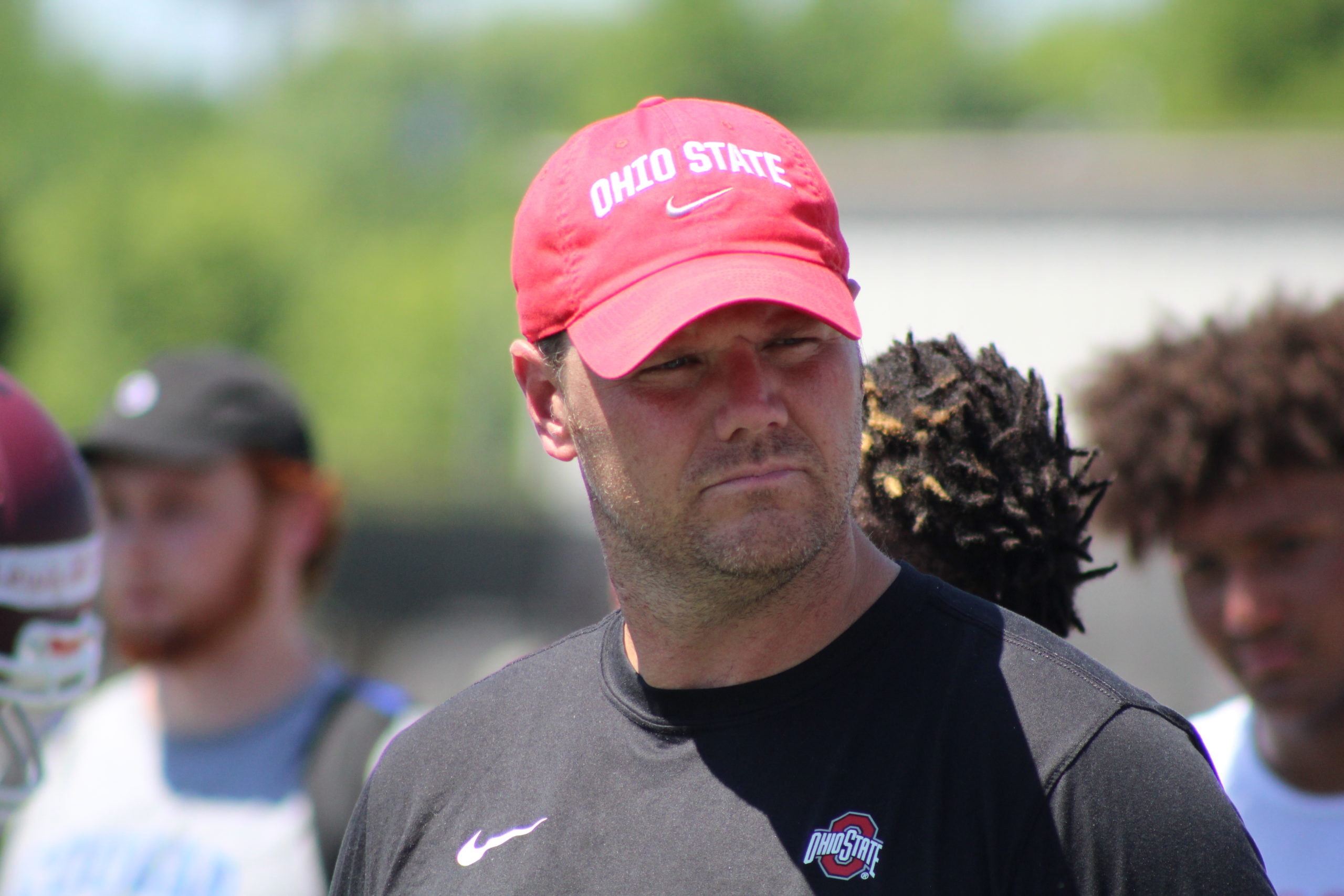
For as badly as Ohio State eventually beat Michigan State Oct. 8, as the first quarter ended the game was still very much in contention.
With the Buckeyes up a mere 14-7, they faced a fourth-and-1 at their own 42-yard line to open the second frame. Electing to go for it despite the supreme field position it could hand the Spartans, Ohio State head coach Ryan Day and staff had a lot of space to consider the play call.
“There was a long time pondering over that one,” Day said. “You go down one road, you say, ‘If we get this, you go down the field and score, it turns into a two score game. You don’t get it, they get the ball in plus territory.’ You go through it back-and-forth, back-and-forth in your mind. And I know how that goes, you go for it and you get it, (people say) ‘Great call.’ You don’t, ‘What are you doing?’”
The Buckeyes rolled out a two-tight end set with sophomore running back TreVeyon Henderson in the backfield. Michigan State showed a look with four defenders on the line in each gap from A to C on both sides, and third-year quarterback C.J. Stroud looked over to the sideline before adjusting the play at the line of scrimmage.
Henderson received a handoff off-tackle, juanting through a hole created by a great combo block from second-year guard Donovan Jackson and third-year tackle Paris Johnson Jr. to pick up 7 yards. Stroud hit third-year wide receiver Julian Fleming on a post route for a 51-yard touchdown the next play.
“It’s just reps with all those guys,” Ohio State offensive line coach Justin Frye said. “You look across the board, we’ve said it 100 times, Paris is now playing at tackle. So he’s gotten more reps under his belt. Dawand (Jones) is now a second-year full-time starter, he’s seen some more of those looks.
“I’m starting to sound like a broken record all the time when I talk, but they haven’t gotten incrementally stronger or faster, the game’s starting to slow down because they can register those little things that will help them play at a high level.”
For an offense that failed to run well when it needed to and on crucial third- and fourth-and-short plays in losses to Oregon and Michigan in 2021, OSU has started showing a consistent ability to get tough yards when it needs them on the ground. It’s part of the reason why the Buckeyes’ offense has been so dynamic through the first half of the season.
“Those are the swing moments of a game that you’ve got to have,” Day said. “Those game-altering plays, those gap plays, that you’ve got to be able to respond (to). And we did. So then the whole game changes from there, at least that whole half did.”
The Michigan and Oregon games served as a microcosm of a deficiency of a 2021 Ohio State offense that ranked No. 1 in scoring and No. 2 in yardage nationally.
Henderson failed to convert a third-and-2 to open the second quarter in Ann Arbor last year, leading to an Ohio State punt. During a snow-filled and windy day that demanded physicality, the Buckeyes managed just 2.1 yards per carry on 30 attempts.
Against Oregon, running back Miyan Williams got stuffed on a fourth-and-2 in the second quarter.
An overall lack of consistency hindered Ohio State’s rushing efforts, one of the reasons Frye was brought in to replace former offensive line coach Greg Studrawa. Now the Buckeyes rank No. 6 in the country for yards per carry, and their ground game has fueled a red zone offense that has scored 27 touchdowns in 29 red zone trips — a 93 percent mark that is best in the country. OSU still managed field goals on the other two possessions.
Frye noted the team’s been making more use of a variety of running schemes in 2022, pin-and-pull plays, different forms of zone and the like, but credits this to the whole offensive staff.
“It’s not so much me, it goes back to what we talked about before — game planning,” Frye said. “I think the skill set of the guys that we have and what we can do, and what we’re able to do at a high level, you try to find those (plays) year-in and year-out. As you go through the room, you look at all the guys in the staff room and it’s not just me.”
When it comes to short yardage, Frye stated that his unit’s situational awareness has improved. His linemen are anticipating what the calls will be and how to execute their schemes to move the chains or plunge into the end zone. Per Frye, they know why a given play is being called.
“It’s just the understanding of what the defense can bring to you,” Frye said. “Pad level, urgency, gap control. Understanding a first-and-10 may look a little different than a third-and-1 or third-and-2. So you may tighten up a technique, you may have a different call that carries in that situation.”
Tougher tests await for the Ohio State run game. The Buckeyes may have pounded out 85 rushing yards in 16 carries to help secure a 21-10 win over Notre Dame in week one, a team touted as having a stout run defense, but currently the Fighting Irish rank No. 74 in rushing yards allowed per game and No. 84 in yards per carry.
In truth, statistically, it’s Rutgers who has been the Buckeyes’ biggest challenge thus far, with the Scarlet Knights situated in the top 15 nationally for both rushing yards and yards per carry allowed.
Michigan, however, ranks No. 6 and No. 7 in those categories, respectively. And there’s no question the undefeated Wolverines pose a bigger threat on the whole than Rutgers.
Up next on the docket for the Buckeyes is Iowa, the nation’s No. 9 total defense and No. 16 in terms of yards per carry. Fresh from an off week, Ohio State will look to maintain its toughness and short-yardage success against the Hawkeyes.
“These guys aren’t settled with, ‘Oh, we had a good game last week, let’s go,’” Frye said. “Every week we’re coming in and we’re finding something on film we need to attack, something that maybe wasn’t as clean as we want. And they’re looking for that. That’s been the best part.”








